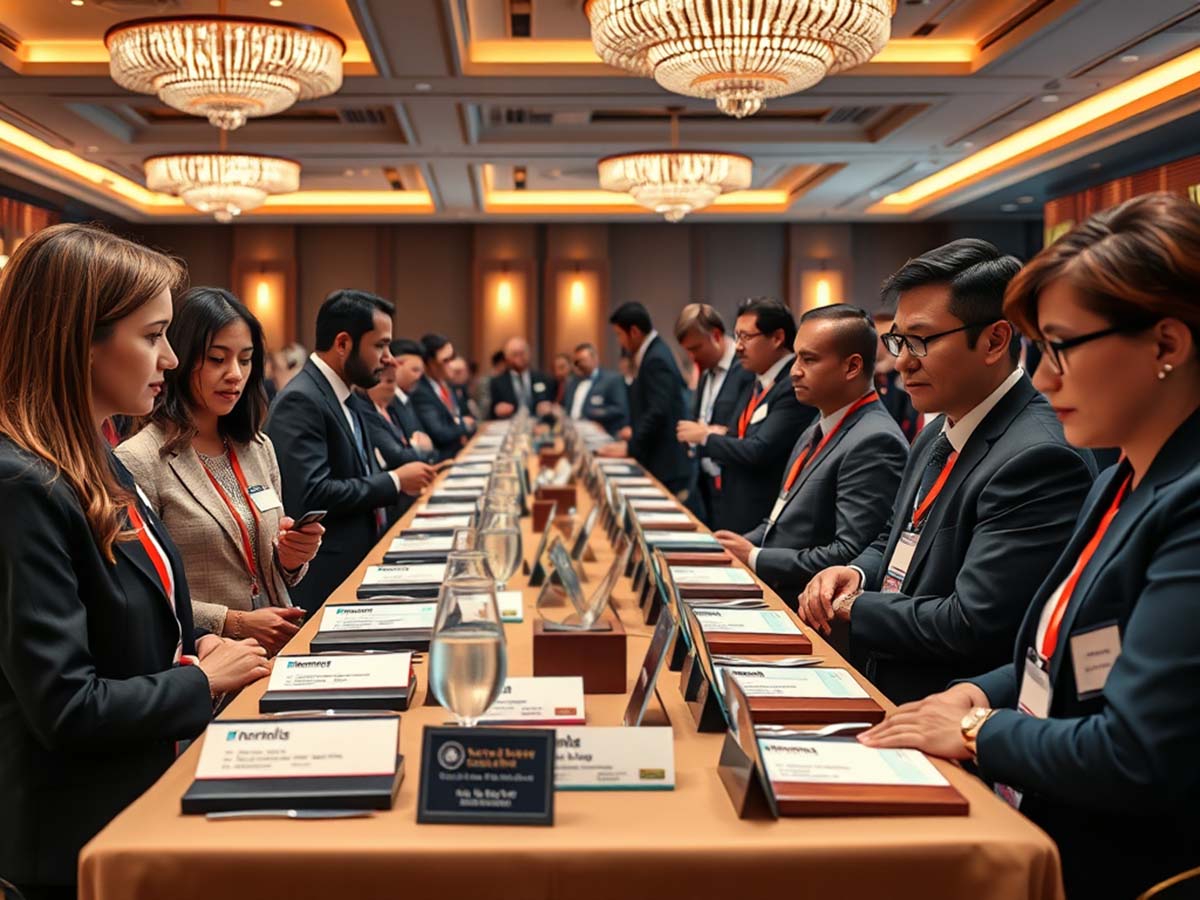How to Ensure Smooth On-Site Conference Registration
Why a Well-Organized Registration Process Matters
The check-in process is the first direct interaction attendees have with an event. If registration runs smoothly, it sets a positive tone, creating a sense of professionalism and organization. Long lines, unclear instructions, or missing materials can leave guests feeling frustrated before they even step into the conference space.
A streamlined registration experience allows guests to enter the event with ease. When registration is efficient, attendees spend less time waiting and more time networking, exploring booths, or preparing for their sessions. Organizers who invest in a well-structured registration system ensure that guests feel welcomed from the moment they arrive.
Pre-Event Planning for a Stress-Free Registration
A smooth registration process starts long before the first guest arrives. Anticipating potential challenges and having a solid plan in place ensures that everything runs without delays.
Creating an Accurate Attendance Estimate
Knowing the expected number of attendees is critical for organizing registration. It affects the number of check-in counters, the amount of staffing needed, and how materials should be distributed. If a conference expects 1,000 attendees, it requires a much larger setup than an event with 200 guests.
Tracking online registrations provides an estimate of attendance. If most guests have pre-registered, organizers can set up separate check-in stations for different attendee categories. Dividing guests into groups such as VIPs, speakers, and general attendees speeds up the process.
Designing an Efficient Registration Area
The layout of the registration area has a significant impact on check-in efficiency. A poorly designed setup can lead to crowding, confusion, and delays.
A well-organized registration area includes clear signage directing guests to the correct line, separate stations for pre-registered guests and walk-ins, and designated help desks for troubleshooting issues. Ensuring that check-in counters are well spaced prevents congestion and allows guests to move through the process smoothly.
Training Staff for a Seamless Check-In
A well-trained registration team is essential for an efficient process. Staff should be familiar with the check-in system, event schedule, and troubleshooting procedures.
Training should include how to use the check-in software, instructions on handling missing registrations or badge errors, and guidelines for offering excellent customer service. When staff members are confident in their roles, they can process attendees quickly while maintaining a welcoming atmosphere.
Using Technology to Speed Up Check-Ins
Technology has revolutionized the way conferences handle check-ins. Digital solutions significantly reduce wait times and enhance accuracy.
Implementing QR Code and Mobile Check-Ins
QR codes allow for a fast and efficient check-in process. Attendees who register online receive a unique QR code, which they can scan at self-service kiosks or check-in counters. This method eliminates the need for manual searches in the database, saving time and reducing human error.
Mobile check-ins also reduce the need for printed confirmation emails, minimizing paper waste while providing a more seamless experience.
Utilizing On-Site Badge Printing
Pre-printing badges can be helpful, but on-site badge printing offers greater flexibility. Some attendees may have last-minute changes to their information, and printing badges in real-time allows for instant corrections.
Setting up badge printing stations near the entrance makes check-ins more efficient. Having backup printers ready ensures that technical malfunctions do not slow down the process.
Enabling Contactless Payment for Walk-Ins
Some attendees decide to register at the last minute. A contactless payment system allows them to complete registration quickly without dealing with cash transactions.
Providing multiple payment options, such as credit card processing and mobile payments, ensures that walk-in guests can complete check-in without delays.
Preparing for Common Registration Challenges
Even with careful planning, unexpected issues can arise. Having solutions in place ensures that registration runs smoothly.
Handling Missing Registrations
Despite confirmation emails and pre-registration, some attendees may arrive without being on the registration list. Organizers should have a designated area for handling such cases without disrupting the main registration lines.
A customer service representative should be available to verify registration details. Having a printed attendee list as a backup is also helpful in case of system malfunctions.
Assisting Late Arrivals
Not all attendees arrive at the start of the event. Some may show up after the first sessions have begun. Keeping part of the registration desk staffed throughout the day ensures that latecomers can check in efficiently.
Having a separate counter for late arrivals helps prevent congestion in the main registration area.
Managing Special Requests
Some attendees may require accessibility accommodations, dietary considerations, or other special requests. A designated help desk allows staff to handle these cases with care.
Being proactive in addressing these needs ensures that all attendees feel comfortable and included.
Creating a Positive Attendee Experience
A well-managed registration process is more than just an administrative task. It sets the tone for the entire event and makes guests feel valued.
Providing a Warm Welcome
The way guests are greeted at registration affects their perception of the event. Staff should be trained to greet attendees with a smile, answer questions, and assist with any concerns.
Simple gestures such as providing bottled water or having a comfortable waiting area can enhance the experience.
Organizing Event Materials Efficiently
Many conferences provide materials such as event guides, maps, and promotional items. Distributing these items in an organized manner prevents delays at the registration counter.
A separate station for collecting materials allows guests to move through check-in more efficiently.
Offering Real-Time Assistance
Attendees may need assistance with finding session locations, accessing Wi-Fi, or learning about the event schedule. Having a help desk near the registration area ensures that questions can be answered quickly.
A visible information station prevents confusion and helps attendees navigate the event more easily.
Ensuring a Seamless Exit Process
The registration process should not only focus on check-ins but also on a smooth departure experience.
Collecting Attendee Feedback
Gaining insights from attendees helps improve future events. Providing QR codes for quick feedback surveys encourages participation.
Implementing an Express Check-Out System
For multi-day events, express check-out helps manage badge returns and material drop-offs. Setting up return bins for lanyards and event guides keeps the venue organized.
Thanking Attendees as They Leave
Expressing gratitude enhances the event’s professional image. A simple thank-you from staff leaves a positive lasting impression.
Thoughts on Streamlining Registration
A well-structured registration process eliminates stress and allows attendees to focus on the event itself. With proper planning, trained staff, and digital tools, event organizers can create a seamless check-in experience that leaves a lasting impression. When guests feel welcomed and valued, they are more likely to engage, participate, and return for future events.









